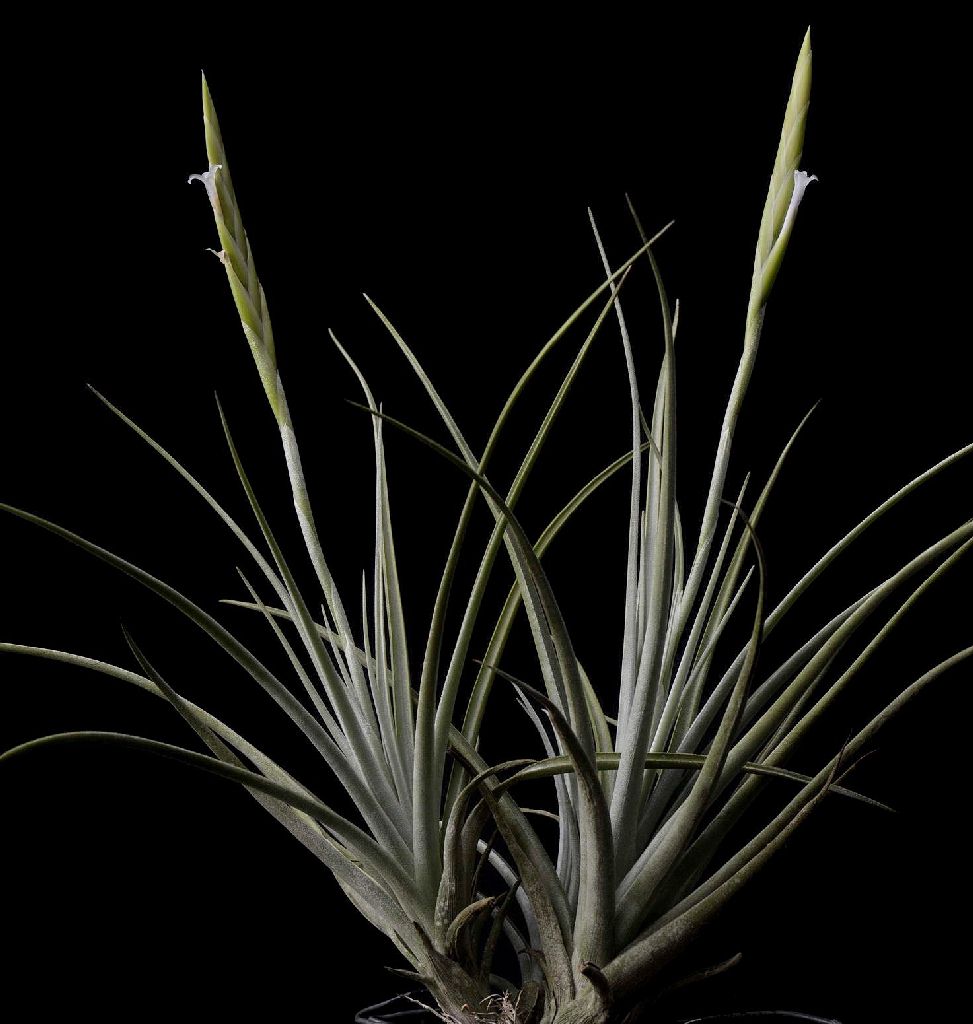
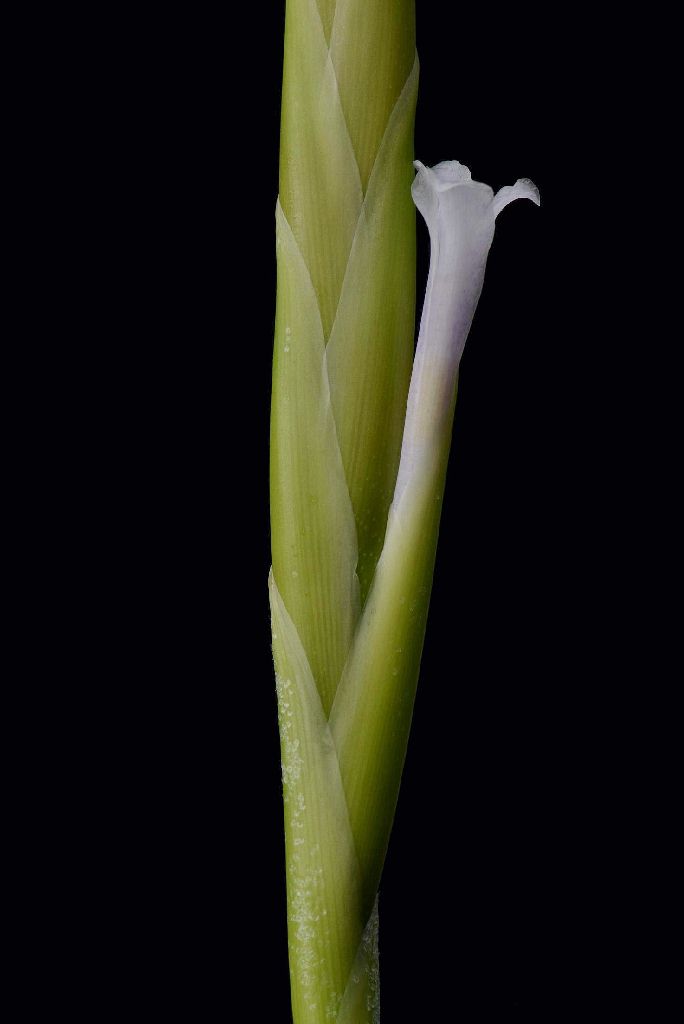
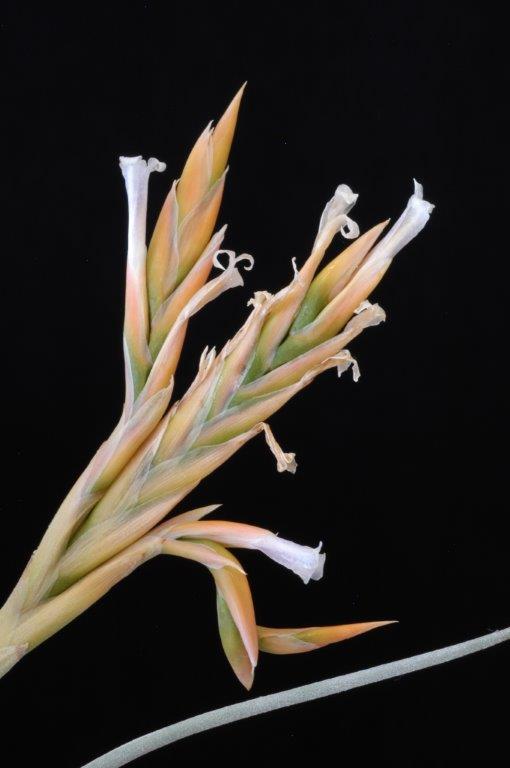
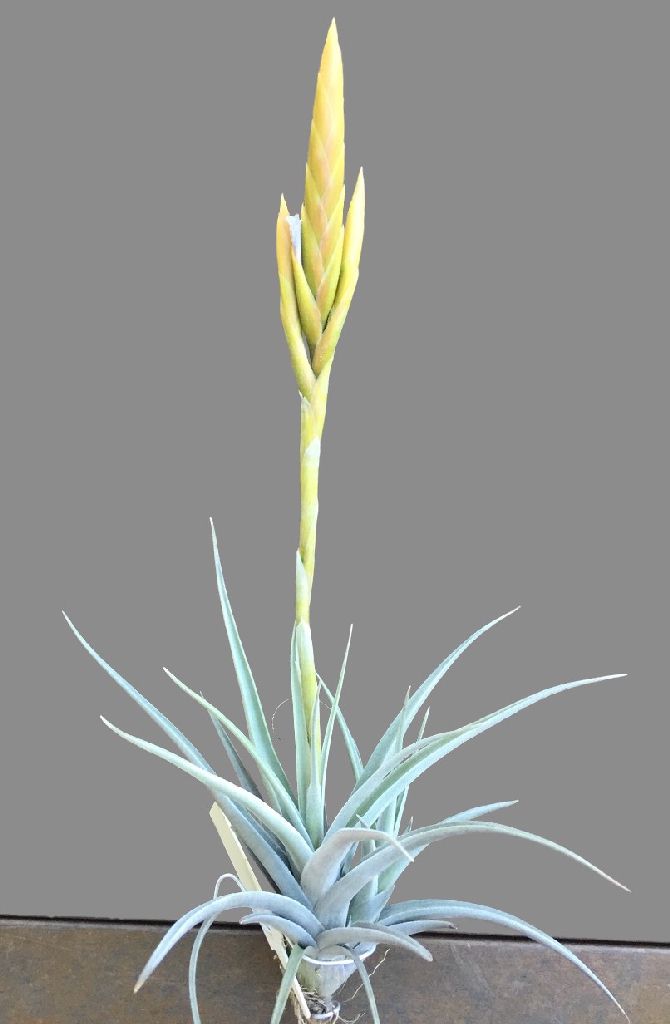
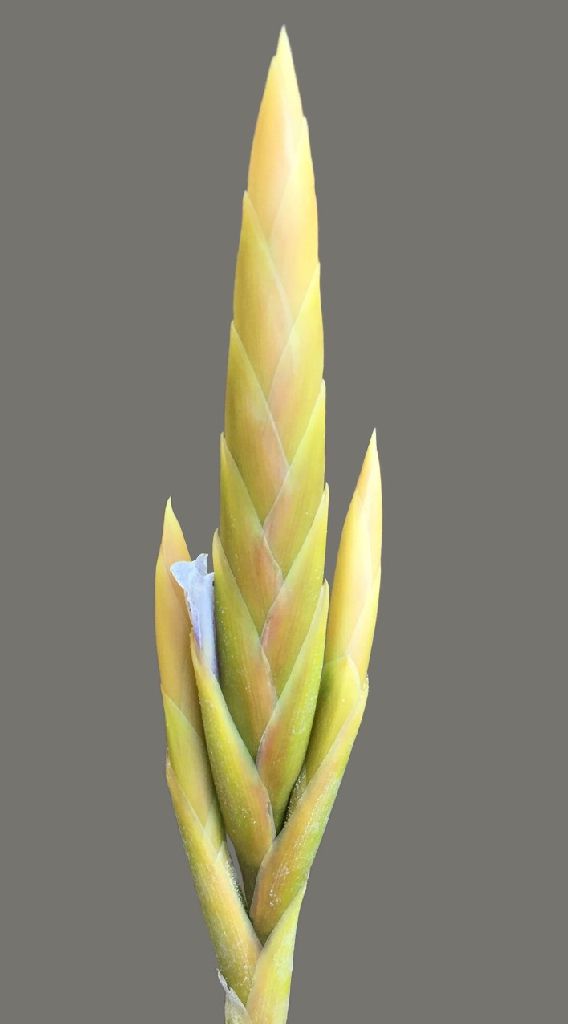
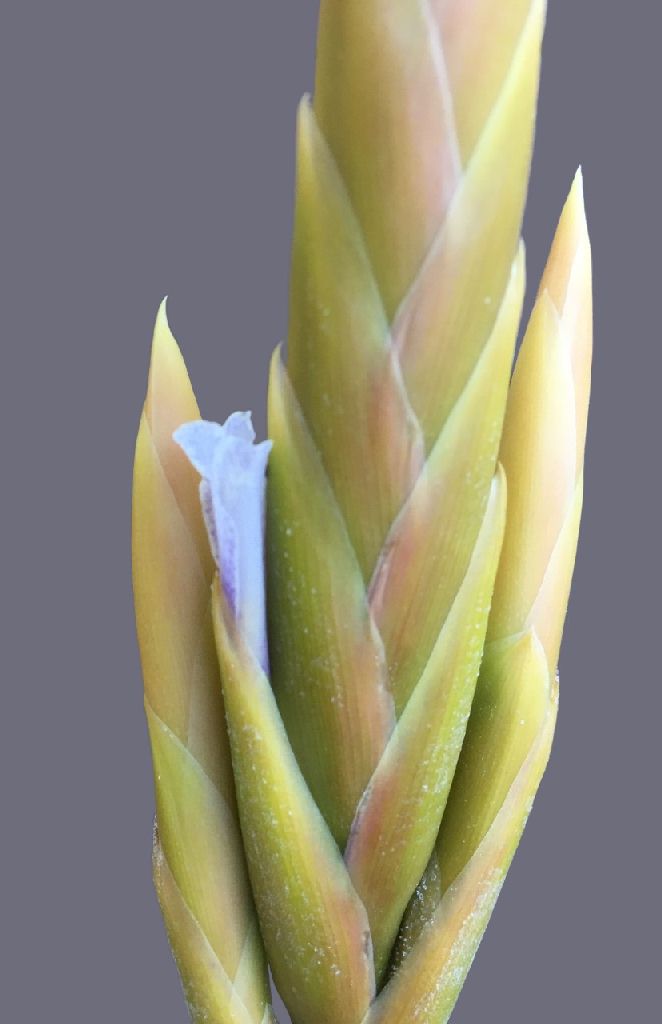
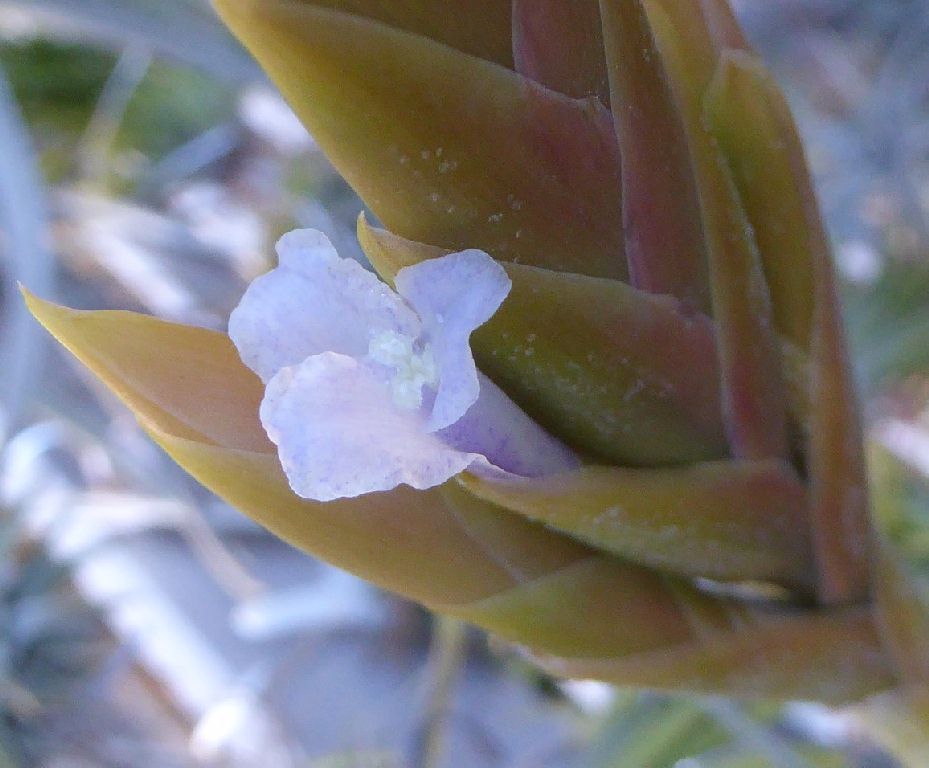
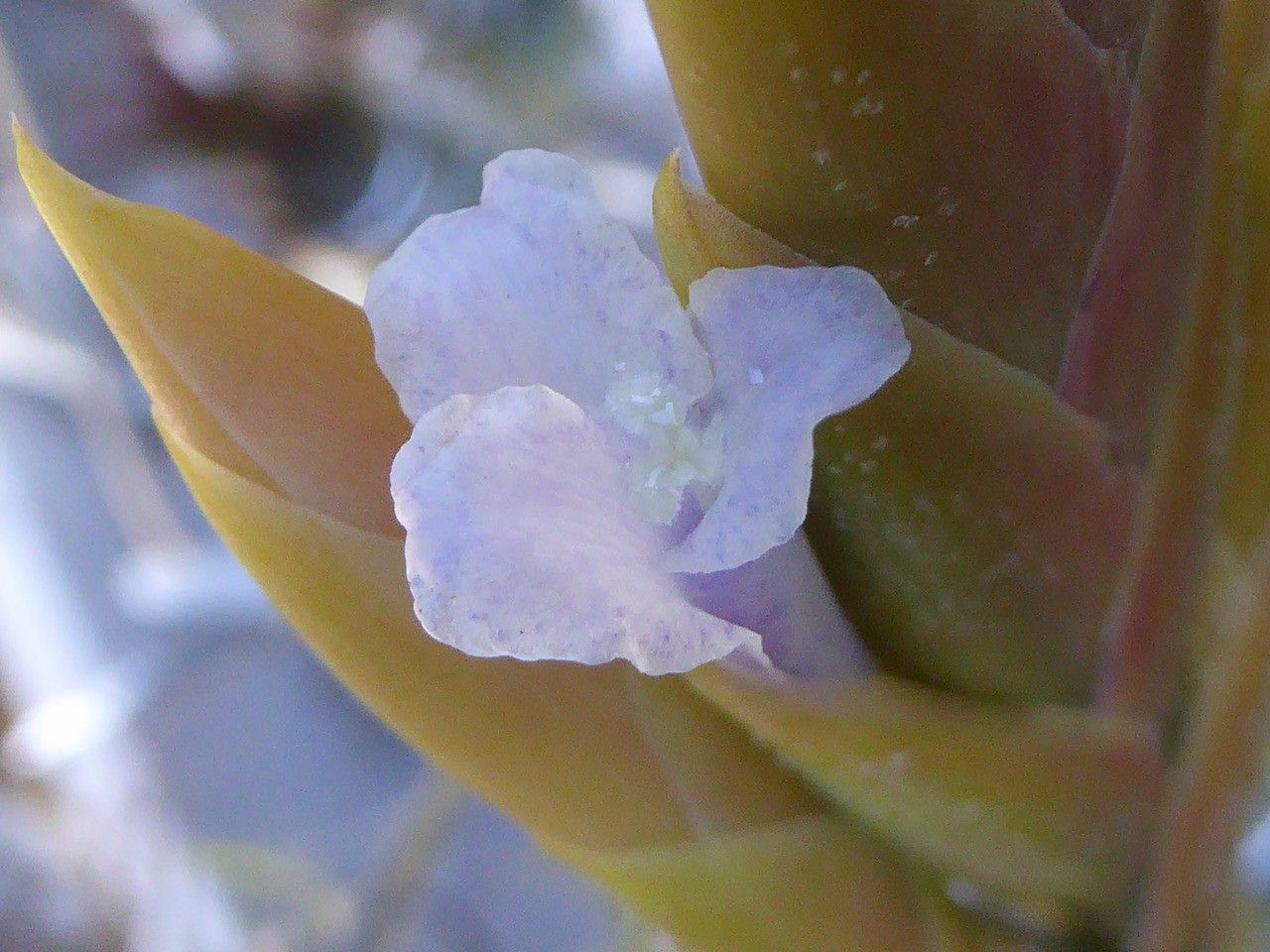
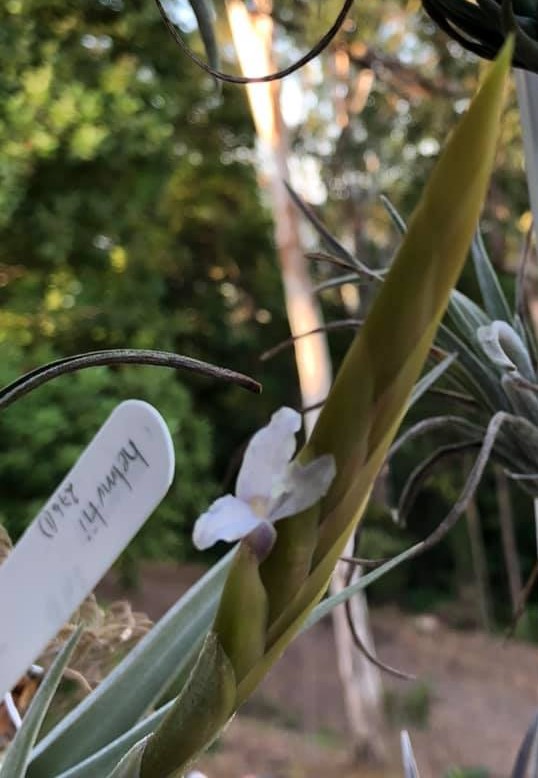
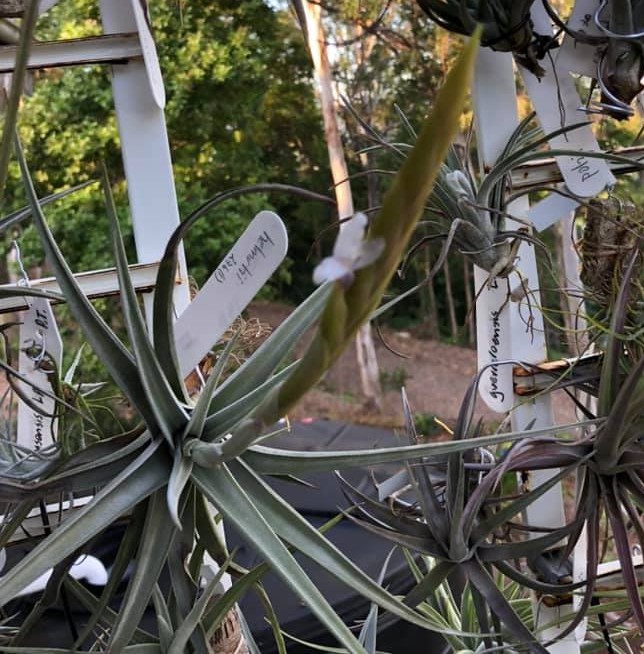
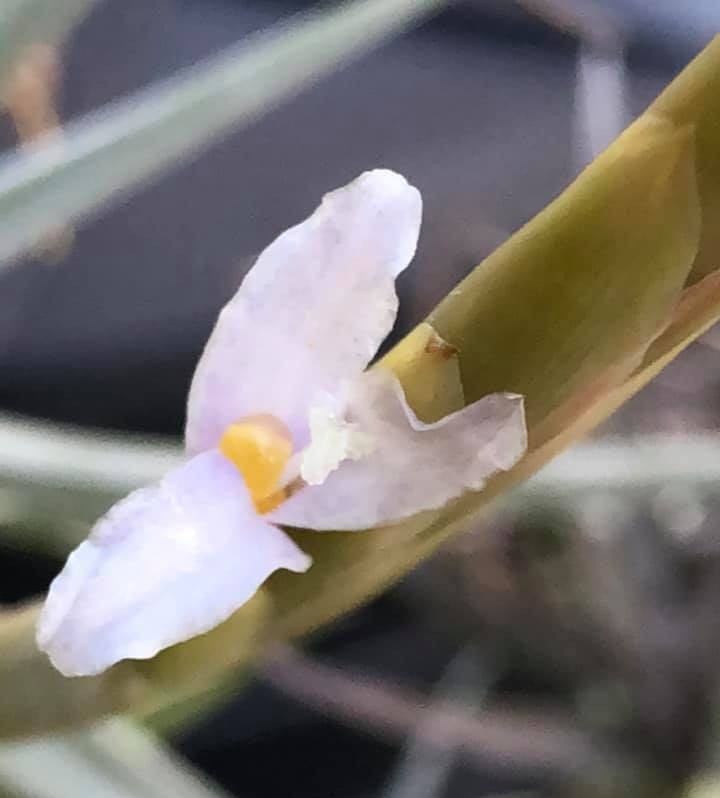
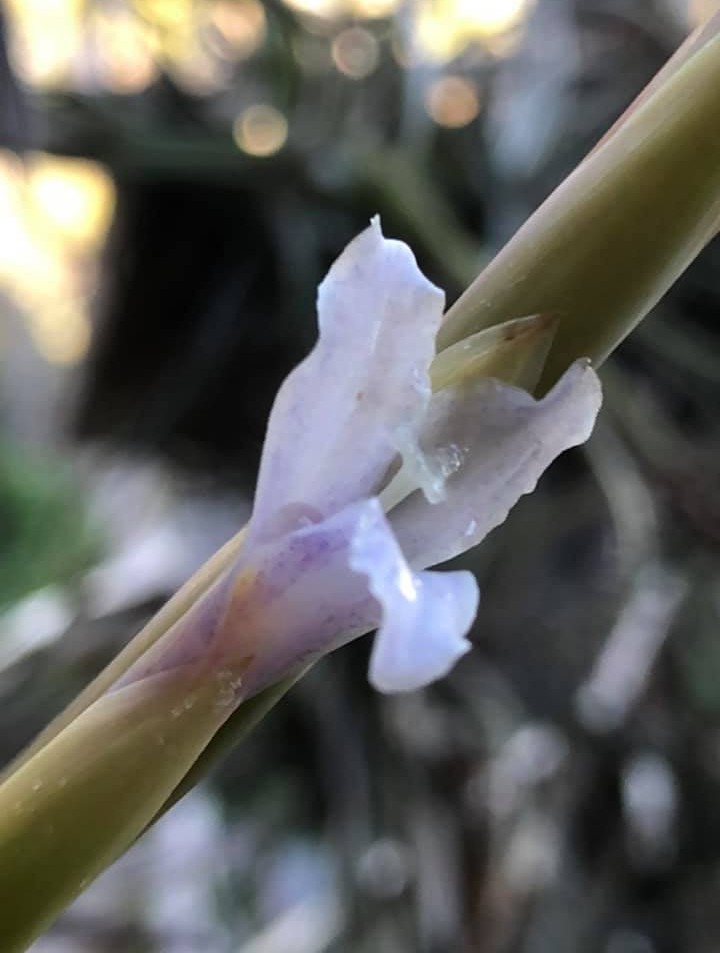
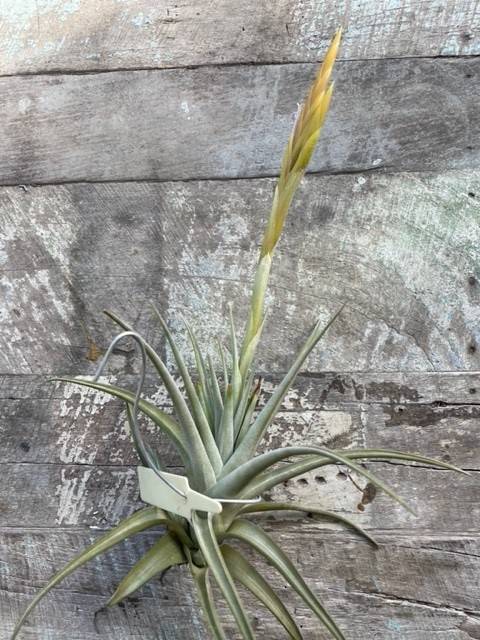
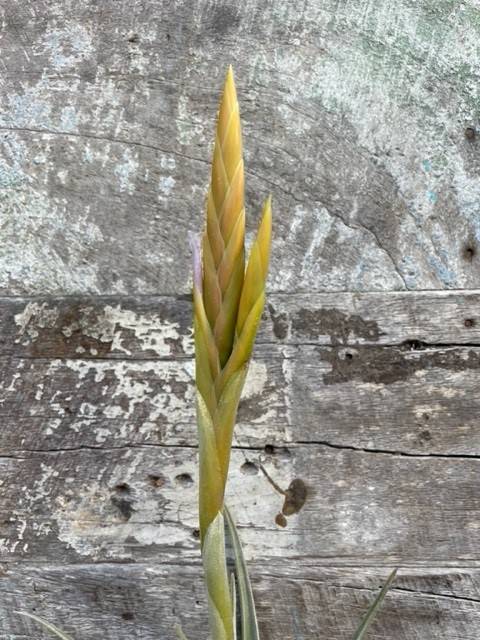
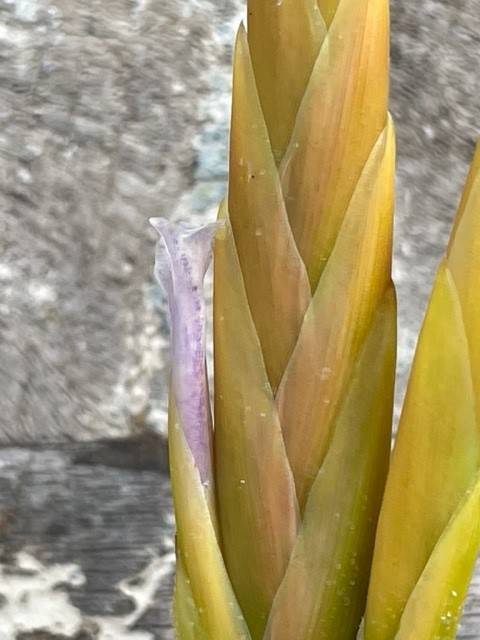
Typus: H. Hromadnik 13009, Bolivia, Depto. Chuquisaca, Prov. Oropeza, in rupibus verticalibus vallis fluminis Rio Chico, 1800 m s. m., 6.8.1987 (WU, Holotypus); L. & H. Hromadnik 5028a, Bolivia, Depto. Chuquisaca, Prov. Campero, valle laterali fluminis Rio Grande australe de Aiquile, 1700 m s. m., 16.7.1979 (WU, Paratypus).
PLANT- Short stemmed, rosette, single or few branched, growing on rocks, flowering to 50cm high.
LEAF - Densely polystichous, thin triangular, top ones erect, those below spreading to reflexed, becoming stiff, 20-30cm long, edges fimbriate.
LEAF SHEATH - Wide triangular, about 20mm long, at the bottom 40mm wide, insides naked for 10mm, greenish yellow, finely nerved and thick leathery with the exception of the membranous lobes on the side and at the base, top half dense with appressed radial trichomes, on the outside scaled near the bottom of the blade which is not clearly established.
LEAF BLADE - Thin triangular, next to the sheath 17-25mm wide and then becoming smooth, top half strongly grooved gradually becoming apiculate, thick and succulent, dense with silver prominent dorsiventral scales, fine long nerves showing on the outside.
SCAPE - Approximately as long as the leaves, green, naked, 5mm diameter, erect, not totally masked by scape bracts, internodes 20-30mm.
SCAPE BRACTS - Long oval, thick leathery, green, nerved, outer densely scaled, 45-60mm long, l5-17mm wide, the bottom laminate, the top ones spoon-shaped, hollow and short tipped. At the bottom of the stem almost totally covered but part left visible.
INFLORESCENCE - Exceeds the leaves, simple or compound, bipinnate (subdigitate branched) to 5 erect to resting together spikes.
PRIMARY BRACT - Similar to stem bracts, greenish to pale pink, nerved, outside with dense appressed scales, inside with exception of the tip naked, thick leathery, to 45mm long and l5mm wide, longish oval with clearly a tip.
SPIKE - Erect, longish acuminate, strongly complanate, almost sessile, 12-17cm (when simple to 30cm) long, 19mm wide, 8-16 (when simple to 40) flowers. Rhachis straight, green, with scattered punctulate scales, 4 edged flat, with cavities, flower bracts do not totally cover, internodes 7mm long.
FLOWER - To 55mm long, densely distichous, 6mm stem, not scented.
FLOWER BRACT - Green to pale pink, densely imbricate, the bottom dense, the middle of the spike scattered scales, the top ones naked, to 40mm long, 15mm wide, spoon shaped hollow, long oval, the tip apiculate, the tip keeled, at the bottom double keeled, leathery with membranous edge, at anthesis becoming smooth, in a dry state strongly nerved.
SEPAL- To 30mm long, 9mm wide, tip lancelike, thin membranous, naked, nerved, green, the back pair joined 1mm high and keeled.
PETAL - Tongue-shaped, white, pale violet "overflow" to 47mm long, 3mm wide. Platte 6mm spread out, blunt, the edge finely serrated, making an erect narrow tube with tips sticking out.
STIGMA & STYLE - Enclosed in the tube, reaches the throat of the petal. Stamens to 32mm long, filaments straight, ribbon like, 1mm at base, white, the top part pale violet. Anthers joined at the base, 7mm long, 0.5mm diameter, light yellow.
Pollen pale yellowish.
Ovary light green, oval, to 7mm long, 3mm diameter.
Style filiform, lobes white, broad, papillose and spreading.
Stigma (Type 1 Brown and Gilmartin).
HABITAT - BOLIVIA, Chuquisaca, Oropeza, flood plain of Rio Chico, 1800m, Campero, side of Rio Grande, South of Aquile, 1700m.
HOLOTYPE H Hromadnik 13009, Bolivia, Dept. Chuquisaca, Prov. Oropeza, on vertical rocks in the Rio Chico river valley, 1800m.s.m. 6 Aug 1987 (WU). Paratype L&H Hromadnik 5028a Bolivia, Dept. Chuquisaca, Prov. Campero in the wide Rio Grande river valley, south of Aiquile, 1700 m.s.m. 16 July 1979. (WU)
Named after Helmut Hromadnik.
Differs from T. boliviensis in
1- Short stem.
2- More rigid leaves.
3- Leaf sheaths with large lepidote scales.
4- Leaf blade channelled, more spreading, underneath clearly nerved.
5- Inflorescence longer.
6- Rhachis not totally covered.
7- longer and wider spikes.
8- Larger flowers.
9- Floral bracts longer, upper ones subglabrous, green to pale pink.
10- After anthesis floral bracts much keeled.
11- Sepals glabrous on outside.
12- Petals longer.